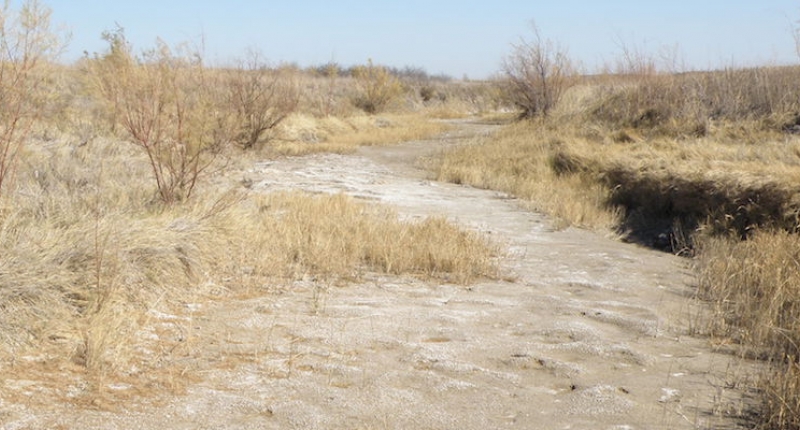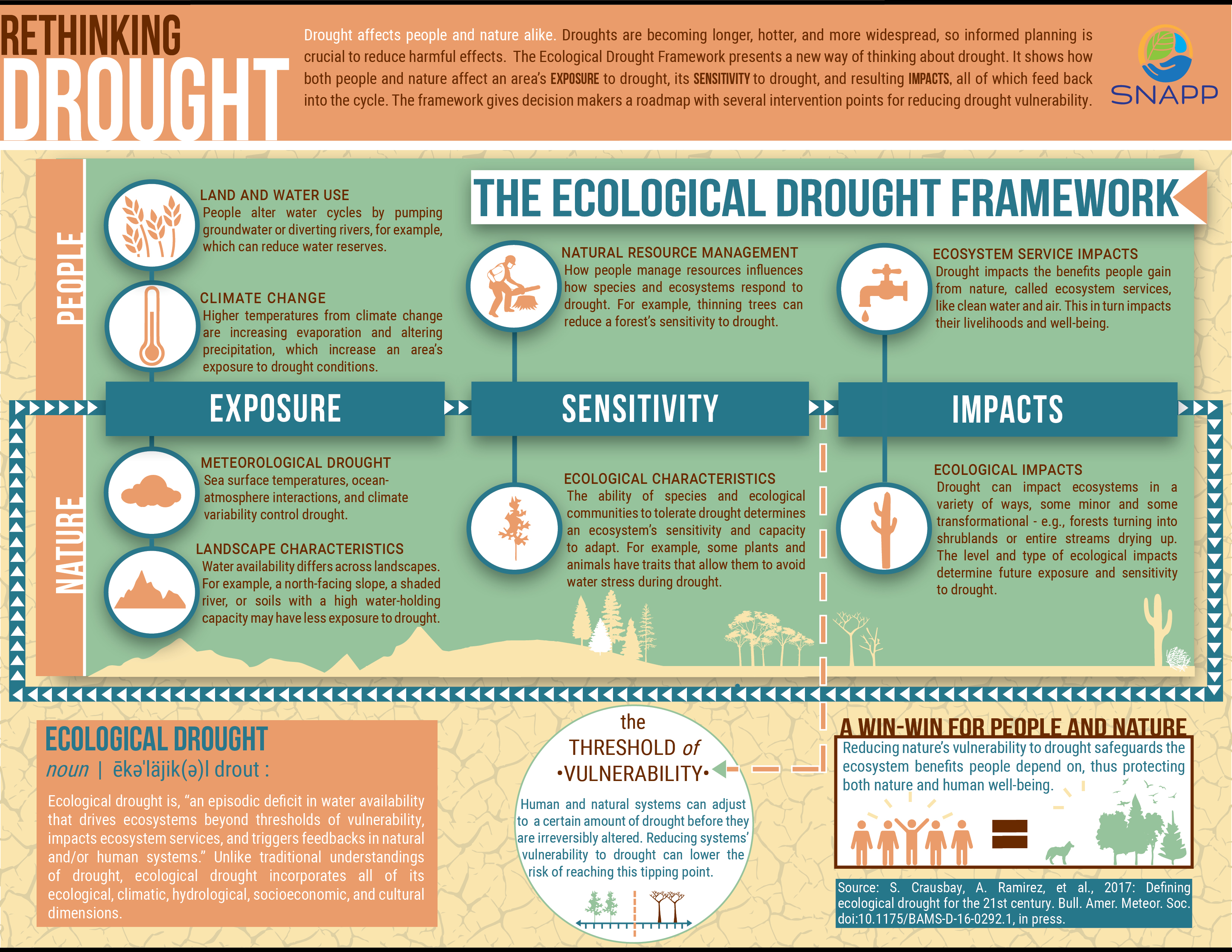Redefining Drought Could Lead to Better Preparation

Story modified from the original version written by Shawna Richter-Ryerson, University of Nebraska School of Natural Resources
Definitions of drought have tended to focus primarily on its effects as a meteorological condition and through a human-centric lens – for example, reduced water levels, crop stress or failure, and socioeconomic impacts. What these definitions ignore are the high costs of drought on nature and how those costs, in turn, affect human communities.
Recently, a team of researchers from the NCEAS collaborative initiative Science for Nature and People Partnership (SNAPP) developed a new definition, dubbed ecological drought, that provides a more holistic view. By integrating drought’s ecological, climatic, hydrological, socioeconomic and cultural dimensions, this conceptual framework may help decision-makers better prevent and respond to drought impacts.
“Ecological drought impacts are important, but so far, they have not easily fit under the existing definitions long used by the drought community. As a result, ecosystem responses to drought remain largely absent from most drought-planning efforts,” said lead author Shelley Crausbay, a postdoctoral researcher with NCEAS.
According to the new definition, which was presented in the Bulletin of the American Meteorological Society, ecological drought is a deficit in available water to the point at which ecosystems are irreversibly altered, thus affecting benefits people typically gain from nature, such as food, water, clean air and recreation. The lack of benefits, in turn, triggers new reactions in both natural and human systems.
When ecosystems change, the services they once provided may be altered or lost altogether — and replacing them can cost communities millions. For example, after a decade-long drought, Australia spent about $6.2 million to implement efforts to support air quality regulation, water treatment, erosion prevention and other services that had previously been provided by a river ecosystem.
And those costs are likely to keep increasing.

Over the course of the 21st century, the researchers said, droughts have become hotter, longer, more expansive and costlier than those previously recorded. Exacerbating this issue are human demands for water, along with changes in land-use practices, such as fire suppression, and climate change, which altogether means ecosystems will continue to become increasingly sensitive to drought.
“We now see profound ecological responses to drought, like mass fish kills or widespread tree mortality, that have real consequences for biodiversity, including complete ecosystem transformations, such as from forest to shrubland,” said Crausbay.
Working group members Michael Hayes, a professor within the University of Nebraska’s School of Natural Resources, and Deborah Bathke, a climatologist with the National Drought Mitigation Center, said the new definition will be a benchmark in drought risk management and planning. Already, planners in Montana are using it to identify which ecosystem services, if lost, would matter the most to their communities and what measures they could take to reduce their vulnerability to drought.
Going forward, the team hopes to continue integrating the ecological drought framework into drought science, planning, policy and management so communities take a proactive approach to combatting drought, rather than a reactive one.
“It is time for ecosystems to have a seat at the drought decision-making table, with the realization that an investment in water for nature may also be an investment in water for people,” Crausbay said. “A more holistic planning and research approach that includes ecological drought means both people and nature will be better prepared for the rising risk of drought.”
The paper is a product of SNAPP’s Ecological Drought Working Group and received support from the U.S. Geological Survey’s National Climate Change and Wildlife Science Center. The working group is a diverse group of experts from a variety of fields, including climatologists; hydrologists; wildlife, fish and plant biologists; fire ecologists; science communicators; planners and policymakers; environmental economists and social scientists. They are united in their dedication to creating a framework to help communities better prepare for drought and adopt management strategies that support whole ecosystems.
